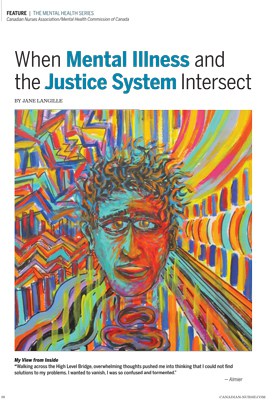This is my third feature in a series about mental health for Canadian Nurse magazine, in collaboration with the Mental Health Commission of Canada. All too often, people with mental illness who have been in trouble with the law or incarcerated are assumed to be likely to reoffend at the drop of a hat. This stereotype does not apply to the vast majority of offenders and only serves to stigmatize those who need and deserve help.
A disproportionate number of people with mental illness get caught up in the justice system, yet our justice system is ill-equipped to provide the services they need and deserve. This inadequacy is pervasive across all stages of interaction with the justice system, from first interaction with police services, to assessment and access to treatment programs while in correctional facilities, to treatment and support programs after discharge.
I learned a lot about the “gaping crevasses” that exist for people with mental illness who intersect with the justice system from Patrick Baillie, a lawyer and a consulting psychologist with the Calgary Police Service and a member of the Mental Health Commission of Canada (MHCC) advisory council.
Brett Batten, a man who has been living with bipolar disorder for most of his life, generously shared his personal experience inside a correctional facility and his long journey to finally accessing treatment and being found not criminally responsible on account of mental disorder.
In order to address the gaping crevasses, we need to see this as a societal problem rather than pass-the-buck exercise between the mental health system and the justice system. Diversion court to assess people pre-charge and partnerships between mental health organizations and police services are some of the innovative ways that experts are pursuing to increase the number of people who can access treatment and support.


